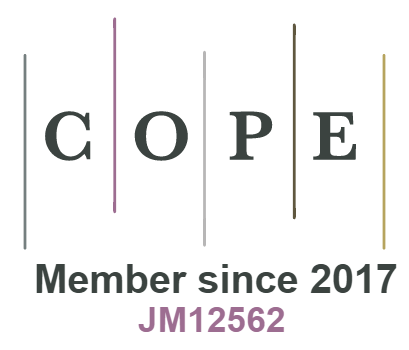Ultra-Reliable Low-Latency Communication (URLLC) in 5G Networks: Enabling Mission-Critical Applications
DOI:
https://doi.org/10.18034/ei.v11i1.707Keywords:
URLLC, 5G Networks, Low-Latency Communication, Mission-Critical Applications, Ultra-Reliable Communication, Network ReliabilityAbstract
In 5G networks, Ultra-Reliable Low-Latency Communication (URLLC) is a critical technology that supports mission-critical applications in various industry sectors. This study investigates the importance, difficulties, and policy consequences of URLLC deployment. A thorough assessment of the literature, an analysis of the underlying technologies, performance evaluation methods, and the effect of URLLC on mission-critical systems are all part of the process. Principal discoveries underscore the revolutionary possibilities of URLLC in healthcare, transportation, industrial automation, and public safety. However, they also point to obstacles to technological optimization, spectrum distribution, security, and interoperability. The significance of proactive steps in spectrum policy, regulatory frameworks, data protection, and research funding is highlighted by policy implications as they aid in successfully implementing URLLC. Stakeholders may fully realize the potential of URLLC to build a connected world where incredibly dependable communication enables people, companies, and communities to prosper and innovate in the digital era by tackling these issues and accepting policy actions.
Downloads
References
Ande, J. R. P. K., & Khair, M. A. (2019). High-Performance VLSI Architectures for Artificial Intelligence and Machine Learning Applications. International Journal of Reciprocal Symmetry and Theoretical Physics, 6, 20-30. https://upright.pub/index.php/ijrstp/article/view/121
Anumandla, S. K. R. (2018). AI-enabled Decision Support Systems and Reciprocal Symmetry: Empowering Managers for Better Business Outcomes. International Journal of Reciprocal Symmetry and Theoretical Physics, 5, 33-41. https://upright.pub/index.php/ijrstp/article/view/129
Chen, S., Wen, H., Wu, J., Chen, J., Liu, W. (2018). Physical-Layer Channel Authentication for 5G via Machine Learning Algorithm. Wireless Communications & Mobile Computing (Online), 2018. https://doi.org/10.1155/2018/6039878 DOI: https://doi.org/10.1155/2018/6039878
Deming, C., Khair, M. A., Mallipeddi, S. R., & Varghese, A. (2021). Software Testing in the Era of AI: Leveraging Machine Learning and Automation for Efficient Quality Assurance. Asian Journal of Applied Science and Engineering, 10(1), 66–76. https://doi.org/10.18034/ajase.v10i1.88 DOI: https://doi.org/10.18034/ajase.v10i1.88
He, Q., Hu, Y., Schmeink, A. (2018). Resource Allocation for Ultra-reliable Low Latency Communications in Sparse Code Multiple Access Networks. EURASIP Journal on Wireless Communications and Networking, 2018(1), 1-9. https://doi.org/10.1186/s13638-018-1300-5 DOI: https://doi.org/10.1186/s13638-018-1300-5
Khair, M. A. (2018). Security-Centric Software Development: Integrating Secure Coding Practices into the Software Development Lifecycle. Technology & Management Review, 3, 12-26. https://upright.pub/index.php/tmr/article/view/124
Khair, M. A. (2022). Smart Contracts for Secure and Transparent Payroll Management. Asian Accounting and Auditing Advancement, 13(1), 25–35. https://4ajournal.com/article/view/90
Khair, M. A., Ande, J. R. P. K., Goda, D. R., & Yerram, S. R. (2019). Secure VLSI Design: Countermeasures against Hardware Trojans and Side-Channel Attacks. Engineering International, 7(2), 147–160. https://doi.org/10.18034/ei.v7i2.699 DOI: https://doi.org/10.18034/ei.v7i2.699
Khair, M. A., Mahadasa, R., Tuli, F. A., & Ande, J. R. P. K. (2020). Beyond Human Judgment: Exploring the Impact of Artificial Intelligence on HR Decision-Making Efficiency and Fairness. Global Disclosure of Economics and Business, 9(2), 163-176. https://doi.org/10.18034/gdeb.v9i2.730 DOI: https://doi.org/10.18034/gdeb.v9i2.730
Khair, M. A., Tejani, J. G., Sandu, A. K., & Shajahan, M. A. (2020). Trade Policies and Entrepreneurial Initiatives: A Nexus for India’s Global Market Integration. American Journal of Trade and Policy, 7(3), 107–114. https://doi.org/10.18034/ajtp.v7i3.706 DOI: https://doi.org/10.18034/ajtp.v7i3.706
Koehler, S., Dhameliya, N., Patel, B., & Anumandla, S. K. R. (2018). AI-Enhanced Cryptocurrency Trading Algorithm for Optimal Investment Strategies. Asian Accounting and Auditing Advancement, 9(1), 101–114. https://4ajournal.com/article/view/91
Latif, S., Qadir, J., Farooq, S., Imran, M. A. (2017). How 5G Wireless (and Concomitant Technologies) Will Revolutionize Healthcare?. Future Internet, 9(4), 93. https://doi.org/10.3390/fi9040093 DOI: https://doi.org/10.3390/fi9040093
Maddula, S. S. (2018). The Impact of AI and Reciprocal Symmetry on Organizational Culture and Leadership in the Digital Economy. Engineering International, 6(2), 201–210. https://doi.org/10.18034/ei.v6i2.703 DOI: https://doi.org/10.18034/ei.v6i2.703
Maddula, S. S., Shajahan, M. A., & Sandu, A. K. (2019). From Data to Insights: Leveraging AI and Reciprocal Symmetry for Business Intelligence. Asian Journal of Applied Science and Engineering, 8(1), 73–84. https://doi.org/10.18034/ajase.v8i1.86 DOI: https://doi.org/10.18034/ajase.v8i1.86
Mahadasa, R., Ande, J. R. P. K., Varghese, A., & Khair, M. A. (2022). Application of High-Pressure Processing in Food Preservation: Impact on Microbial Safety and Nutritional Quality. Malaysian Journal of Medical and Biological Research, 9(2), 71-80. https://mjmbr.my/index.php/mjmbr/article/view/686
Mullangi, K. (2017). Enhancing Financial Performance through AI-driven Predictive Analytics and Reciprocal Symmetry. Asian Accounting and Auditing Advancement, 8(1), 57–66. https://4ajournal.com/article/view/89
Mullangi, K., Maddula, S. S., Shajahan, M. A., & Sandu, A. K. (2018). Artificial Intelligence, Reciprocal Symmetry, and Customer Relationship Management: A Paradigm Shift in Business. Asian Business Review, 8(3), 183–190. https://doi.org/10.18034/abr.v8i3.704 DOI: https://doi.org/10.18034/abr.v8i3.704
Nouri, P., Alves, H., Latva-aho, M. (2018). Performance Analysis of Ultra-reliable Short Message Decode and Forward Relaying Protocols. EURASIP Journal on Wireless Communications and Networking, 2018(1), 1-14. https://doi.org/10.1186/s13638-018-1210-6 DOI: https://doi.org/10.1186/s13638-018-1210-6
Pizzi, S., Rinaldi, F., Molinaro, A., Iera, A., Araniti, G. (2018). Energy-Efficient Multicast Service Delivery Exploiting Single Frequency Device-To-Device Communications in 5G New Radio Systems. Sensors, 18(7), 2205. https://doi.org/10.3390/s18072205 DOI: https://doi.org/10.3390/s18072205
Sandu, A. K., Surarapu, P., Khair, M. A., & Mahadasa, R. (2018). Massive MIMO: Revolutionizing Wireless Communication through Massive Antenna Arrays and Beamforming. International Journal of Reciprocal Symmetry and Theoretical Physics, 5, 22-32. https://upright.pub/index.php/ijrstp/article/view/125
Shajahan, M. A. (2018). Fault Tolerance and Reliability in AUTOSAR Stack Development: Redundancy and Error Handling Strategies. Technology & Management Review, 3, 27-45. https://upright.pub/index.php/tmr/article/view/126
Shao-Yu, L., Shao-Chou, H., Der-Jiunn, D., Wang, Y. J. (2018). Optimum Ultra-Reliable and Low Latency Communications in 5G New Radio. Mobile Networks and Applications, 23(4), 1020-1027. https://doi.org/10.1007/s11036-017-0967-x DOI: https://doi.org/10.1007/s11036-017-0967-x
Tejani, J. G. (2017). Thermoplastic Elastomers: Emerging Trends and Applications in Rubber Manufacturing. Global Disclosure of Economics and Business, 6(2), 133-144. https://doi.org/10.18034/gdeb.v6i2.737 DOI: https://doi.org/10.18034/gdeb.v6i2.737
Tejani, J. G., Khair, M. A., & Koehler, S. (2021). Emerging Trends in Rubber Additives for Enhanced Performance and Sustainability. Digitalization & Sustainability Review, 1(1), 57-70. https://upright.pub/index.php/dsr/article/view/130
Tran, G. K., Santos, R., Ogawa, H., Nakamura, M., Sakaguchi, K. (2018). Context-Based Dynamic Meshed Backhaul Construction for 5G Heterogeneous Networks. Journal of Sensor and Actuator Networks, 7(4), 43. https://doi.org/10.3390/jsan7040043 DOI: https://doi.org/10.3390/jsan7040043
Vora, A., Kang, K-D. (2018). Effective 5G Wireless Downlink Scheduling and Resource Allocation in Cyber-Physical Systems. Technologies, 6(4), 105. https://doi.org/10.3390/technologies6040105 DOI: https://doi.org/10.3390/technologies6040105
Yerram, S. R., Mallipeddi, S. R., Varghese, A., & Sandu, A. K. (2019). Human-Centered Software Development: Integrating User Experience (UX) Design and Agile Methodologies for Enhanced Product Quality. Asian Journal of Humanity, Art and Literature, 6(2), 203-218. https://doi.org/10.18034/ajhal.v6i2.732 DOI: https://doi.org/10.18034/ajhal.v6i2.732
Ying, D., Patel, B., & Dhameliya, N. (2017). Managing Digital Transformation: The Role of Artificial Intelligence and Reciprocal Symmetry in Business. ABC Research Alert, 5(3), 67–77. https://doi.org/10.18034/ra.v5i3.659 DOI: https://doi.org/10.18034/ra.v5i3.659
Yu, H., Lee, H., Jeon, H. (2017). What is 5G? Emerging 5G Mobile Services and Network Requirements. Sustainability, 9(10), 1848. https://doi.org/10.3390/su9101848 DOI: https://doi.org/10.3390/su9101848
Zhang, J., Tang, P., Tian, L., Hu, Z., Wang, T. (2017). 6–100 GHz Research Progress and Challenges from a Channel Perspective for Fifth Generation (5G) and Future Wireless Communication. Science China. Information Sciences, 60(8), 080301. https://doi.org/10.1007/s11432-016-9144-x DOI: https://doi.org/10.1007/s11432-016-9144-x
Downloads
Published
Issue
Section
License
Copyright (c) 2023 Deng Ying, Mohamed Ali Shajahan, Md Abul Khair, Arun Kumar Sandu

This work is licensed under a Creative Commons Attribution-NonCommercial 4.0 International License.
Engineering International is an Open Access journal. Authors who publish with this journal agree to the following terms:
- Authors retain copyright and grant the journal the right of first publication with the work simultaneously licensed under a CC BY-NC 4.0 International License that allows others to share the work with an acknowledgment of the work's authorship and initial publication in this journal.
- Authors are able to enter into separate, additional contractual arrangements for the non-exclusive distribution of the journal's published version of their work (e.g., post it to an institutional repository or publish it in a book), with an acknowledgment of its initial publication in this journal. We require authors to inform us of any instances of re-publication.









